Meyer Optik 1896 - today

Tradition meets innovation
Meyer-Optik looks back on an eventful history. Founded in 1896, the Görlitz-based company was able to offer innovative, high-quality lenses at a very early stage and to continue this tradition even in a divided Germany for many years. In the now more than 120 years of company history Meyer-Optik was able to inspire many photographers for its products and to win a worldwide large fan community. The unique visual language offered by Meyer-Optik lenses enables photographers to stand out from the crowd in times of smartphone photos and pixel battles by large manufacturers. In the long history, various external circumstances have shaped the path of the lens manufacturers from Görlitz and have usually not made it easier. Nevertheless, the approach is identical today as it was then - to manufacture high-quality, innovative and yet affordable lenses in Germany.
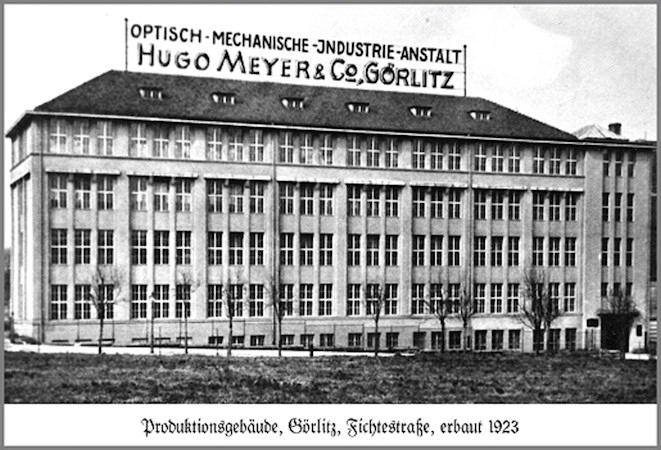
The early years
In 1896 the optician Hugo Meyer, together with the merchant Heinrich Schätze, founded the "Optisch-Mechanische Industrie-Anstalt Hugo Meyer & Co." in Görlitz.
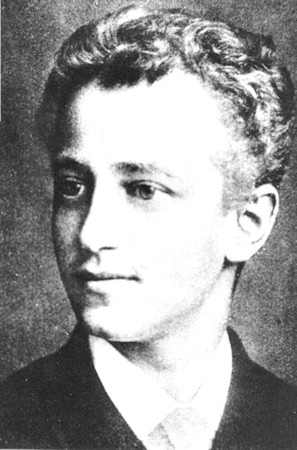
In the first 20 years, Meyer-Optik quickly become known as a lens manufacturer. Successful developments such as the Aristostigmat, a 6-lens Anastigmat, the wide-angle-Aristostigmat and the first projection lenses quickly increased Meyer-Optik's name recognition. The company expanded further by taking over the "Optische Anstalt Schulze und Billerbeck" - manufacturer of the then well-known Euryplan lenses.
Between 1920 and 1942, important foundations for further growth were laid. The cooperation with Dr. Paul Rudolph, who had previously been involved in some of Carl Zeiss Jena's most important lens developments (Protar, Planar, Tessar), should be emphasized here. Together with Dr. Rudolph, the famous Plasmat lenses were developed and the Kino-Plasmat was the world's fastest lens at the time. Another important step was the delivery of OEM-lenses for camera manufacturers - such as the Exakta from Ihagee. In the 1930s Meyer-Optik already had a wide range of high-quality interchangeable lenses. Compared to Carl Zeiss Jena, who was a market leader at the time, the lenses were usually offered at a slightly lower price.
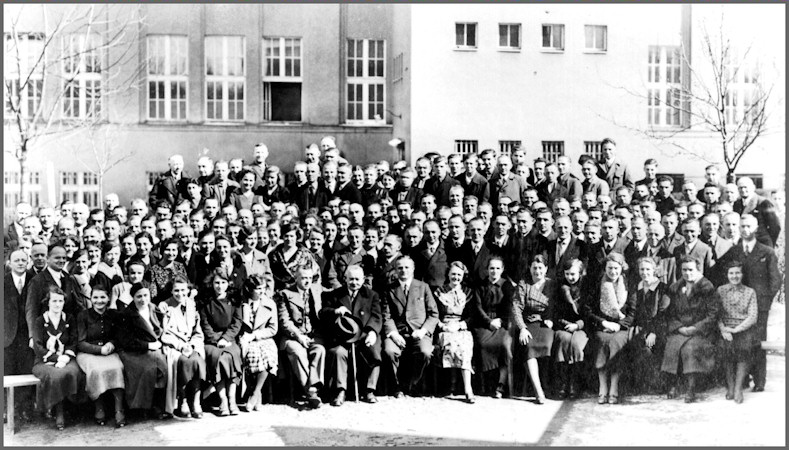
Post-war period until the reunification of Germany
In the post-war period Meyer-Optik produced the Helioplan under the name "VEB Feinoptisches Werk Görlitz" (as successor of the Doppel-Anastigmat). From 1952, the anti-reflection coating with magnesium fluoride was introduced. At this time, mainly the well-known Trioplan triplets, the powerful Primoplan lenses and the Telemegor long focal lengths were produced. Many lenses from Meyer-Optik have regularly been awarded with the highest quality rating for DDR products.
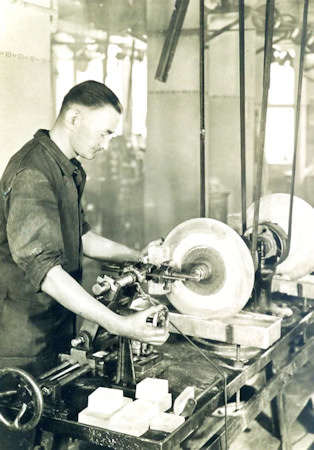
Further patents were applied for in the following years. Among other things, for an aperture-fast setting for photographic lenses, a 5-lens telephoto lens and a corrected lens consisting of four plastic lenses.
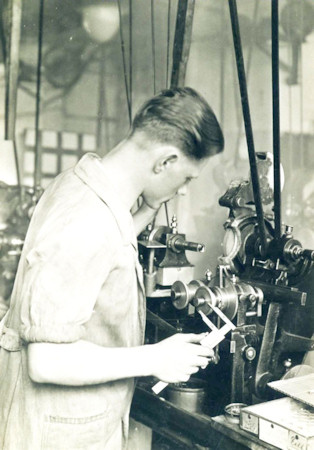
By the integration of the Meyer-Optik into the combine VEB Pentacon, the imprint Meyer optics on the lenses disappeared after 1971. In the mid-1980s, the combine VEB Carl Zeiss Jena took over the VEB Pentacon and thus also Meyer-Optik. As a result of this centralisation, Meyer-Optik increasingly lost technical competence and some products were discontinued in favour of competing models from Carl Zeiss Jena. In addition, many machines necessary for the production of high-quality zoom lenses could not be procured from other socialist states or from Western countries until 1989.
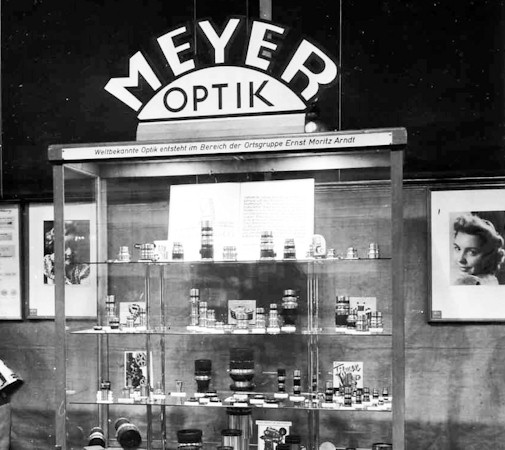
The time after the fall of communism
After reunification, Meyer-Optik was separated from the Carl Zeiss Jena combine and relaunched as "Feinoptisches Werk Görlitz GmbH". Lenses with the imprint Meyer-Optik were produced again. This resurgence was unfortunately only of short duration, since the company could not become competitive at short notice and has been already shut down again by the Treuhand in 1991. A Koblenz-based company again released lenses in the style of the historic originals under the brand name "Meyer-Optik-Görlitz" from 2014 - early 2018.
The resurrection of the brand

At the end of 2018, OPC Europe, based in Bad Kreuznach, Germany, acquired the rights to Meyer-Optik and its lens designs. The specialist in high-precision aspherical and spherical glass lenses opened up the end-user market for itself, with the relaunch of Meyer-Optik. With the help of its own technological know-how and synergies in the field of lens production, existing products were optimized, in large part even completely newly developed, production processes professionalized and the company Meyer Optik Görlitz filled with new life.
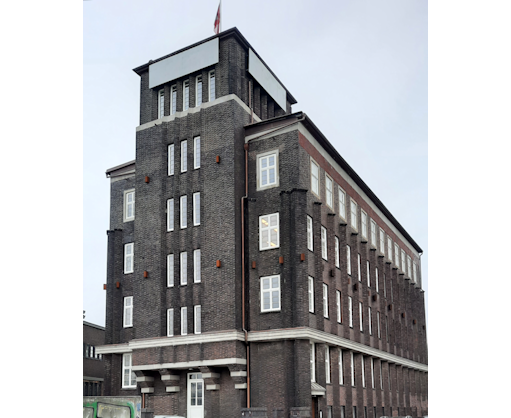
Company foundation & new manufactory in Hamburg
Since August 2021, after several lens series have already been released, Meyer Optik Görlitz has again been operating as an independent company. This step enables Meyer Optik, under the umbrella of OPC Europe as parent company, to position itself more independently on the market and to market the lenses more effectively. Thus, 125 years after the first foundation, there is again an independent Meyer Optik Görlitz GmbH. Another important milestone was then in November 2021, the start of its own manufacture in the heart of Hamburg. Located on the border between Rothenburgsort and Hafen City, the new location is a magnet for interested parties and its surroundings, with the House of Photography, the Elbe bridges, etc., also offer many destinations for those interested in photography. From an business point of view, the own manufactory offers far more
possibilities than before - be it own development work or assembly orders as a contract manufacturer for external ones - the new manufactory puts Meyer Optik Görlitz on an even more stable foundation than before.
The chronology of the new Meyer Optik Görtlitz lenses
The releases of the year 2020
With the Trioplan 100 II, the first new Meyer Optik Görlitz lens was released in June 2020. A milestone for the entire project and the actual starting point as a German lens manufacturer. Followed by the Lydith 30 II in August 2020, the Trioplan 50 II in September 2020 and the Primoplan 75 II in November 2020, Meyer Optik Görlitz went on a real endurance run, releasing 4 lens series in less than 6 months! Each and every one of the lenses has been extremely well received by the market and is characterized by top quality German craftsmanship.
The releases of the year 2021 & 2022
The Primoplan 58 II added another focal length to the Primoplan series in March 2021. Due to the Covid 19 pandemic, the development & production capacity was to be drastically reduced, so that further releases were only possible in the following year. The Trioplan 35 II made its debut in January 2022 and was the first lens to be offered for Nikon Z and Canon RF. In February 2022, the Trioplan 100 II and in July 2022 all other lens series were expanded to include versions for Nikon Z and Canon RF. With its release in September 2022, the Biotar 58 II represents the latest release from Meyer Optik Görlitz.
Meyer Optik 1896 - today

Tradition meets innovation
Meyer-Optik looks back on an eventful history. Founded in 1896, the Görlitz-based company was able to offer innovative, high-quality lenses at a very early stage and to continue this tradition even in a divided Germany for many years. In the now more than 120 years of company history Meyer-Optik was able to inspire many photographers for its products and to win a worldwide large fan community. The unique visual language offered by Meyer-Optik lenses enables photographers to stand out from the crowd in times of smartphone photos and pixel battles by large manufacturers. In the long history, various external circumstances have shaped the path of the lens manufacturers from Görlitz and have usually not made it easier. Nevertheless, the approach is identical today as it was then - to manufacture high-quality, innovative and yet affordable lenses in Germany.

The early years
In 1896 the optician Hugo Meyer, together with the merchant Heinrich Schätze, founded the "Optisch-Mechanische Industrie-Anstalt Hugo Meyer & Co." in Görlitz.

In the first 20 years, Meyer-Optik quickly become known as a lens manufacturer. Successful developments such as the Aristostigmat, a 6-lens Anastigmat, the wide-angle-Aristostigmat and the first projection lenses quickly increased Meyer-Optik's name recognition. The company expanded further by taking over the "Optische Anstalt Schulze und Billerbeck" - manufacturer of the then well-known Euryplan lenses.
Between 1920 and 1942, important foundations for further growth were laid. The cooperation with Dr. Paul Rudolph, who had previously been involved in some of Carl Zeiss Jena's most important lens developments (Protar, Planar, Tessar), should be emphasized here. Together with Dr. Rudolph, the famous Plasmat lenses were developed and the Kino-Plasmat was the world's fastest lens at the time. Another important step was the delivery of OEM-lenses for camera manufacturers - such as the Exakta from Ihagee. In the 1930s Meyer-Optik already had a wide range of high-quality interchangeable lenses. Compared to Carl Zeiss Jena, who was a market leader at the time, the lenses were usually offered at a slightly lower price.

Post-war period until the reunification of Germany
In the post-war period Meyer-Optik produced the Helioplan under the name "VEB Feinoptisches Werk Görlitz" (as successor of the Doppel-Anastigmat). From 1952, the anti-reflection coating with magnesium fluoride was introduced. At this time, mainly the well-known Trioplan triplets, the powerful Primoplan lenses and the Telemegor long focal lengths were produced. Many lenses from Meyer-Optik have regularly been awarded with the highest quality rating for DDR products.

Further patents were applied for in the following years. Among other things, for an aperture-fast setting for photographic lenses, a 5-lens telephoto lens and a corrected lens consisting of four plastic lenses.

By the integration of the Meyer-Optik into the combine VEB Pentacon, the imprint Meyer optics on the lenses disappeared after 1971. In the mid-1980s, the combine VEB Carl Zeiss Jena took over the VEB Pentacon and thus also Meyer-Optik. As a result of this centralisation, Meyer-Optik increasingly lost technical competence and some products were discontinued in favour of competing models from Carl Zeiss Jena. In addition, many machines necessary for the production of high-quality zoom lenses could not be procured from other socialist states or from Western countries until 1989.

The time after the fall of communism
After reunification, Meyer-Optik was separated from the Carl Zeiss Jena combine and relaunched as "Feinoptisches Werk Görlitz GmbH". Lenses with the imprint Meyer-Optik were produced again. This resurgence was unfortunately only of short duration, since the company could not become competitive at short notice and has been already shut down again by the Treuhand in 1991. A Koblenz-based company again released lenses in the style of the historic originals under the brand name "Meyer-Optik-Görlitz" from 2014 - early 2018.
The resurrection of the brand

At the end of 2018, OPC Europe, based in Bad Kreuznach, Germany, acquired the rights to Meyer-Optik and its lens designs. The specialist in high-precision aspherical and spherical glass lenses opened up the end-user market for itself, with the relaunch of Meyer-Optik. With the help of its own technological know-how and synergies in the field of lens production, existing products were optimized, in large part even completely newly developed, production processes professionalized and the company Meyer Optik Görlitz filled with new life.

Company foundation & new manufactory in Hamburg
Since August 2021, after several lens series have already been released, Meyer Optik Görlitz has again been operating as an independent company. This step enables Meyer Optik, under the umbrella of OPC Europe as parent company, to position itself more independently on the market and to market the lenses more effectively. Thus, 125 years after the first foundation, there is again an independent Meyer Optik Görlitz GmbH. Another important milestone was then in November 2021, the start of its own manufacture in the heart of Hamburg. Located on the border between Rothenburgsort and Hafen City, the new location is a magnet for interested parties and its surroundings, with the House of Photography, the Elbe bridges, etc., also offer many destinations for those interested in photography. From an business point of view, the own manufactory offers far more
possibilities than before - be it own development work or assembly orders as a contract manufacturer for external ones - the new manufactory puts Meyer Optik Görlitz on an even more stable foundation than before.
The chronology of the new Meyer Optik Görtlitz lenses
The releases of the year 2020
With the Trioplan 100 II, the first new Meyer Optik Görlitz lens was released in June 2020. A milestone for the entire project and the actual starting point as a German lens manufacturer. Followed by the Lydith 30 II in August 2020, the Trioplan 50 II in September 2020 and the Primoplan 75 II in November 2020, Meyer Optik Görlitz went on a real endurance run, releasing 4 lens series in less than 6 months! Each and every one of the lenses has been extremely well received by the market and is characterized by top quality German craftsmanship.
The releases of the year 2021 & 2022
The Primoplan 58 II added another focal length to the Primoplan series in March 2021. Due to the Covid 19 pandemic, the development & production capacity was to be drastically reduced, so that further releases were only possible in the following year. The Trioplan 35 II made its debut in January 2022 and was the first lens to be offered for Nikon Z and Canon RF. In February 2022, the Trioplan 100 II and in July 2022 all other lens series were expanded to include versions for Nikon Z and Canon RF. With its release in September 2022, the Biotar 58 II represents the latest release from Meyer Optik Görlitz.